When an artist leans into their work and allows the work and spirit to speak, it’s a powerful release onto the canvas. The last two years have been a period of trials for the entire human population, so when we’re confronted with the dark overtones of Brandon C. Smith’s work, we understand it and feel the undeniable fear or grief from the pieces. But this is not to say that all of the works feel this way, for sure they do not. Even the ones that do maintain a sense of grandeur and virtue and sometimes feel like shadows stepping into the light, offering glimmers of hope at the end of such long darkness.
UnderMain decided to feature Smith as a Studio Visit artist back in the summer but time and distraction pulled this story until very late this year. Blame the writer. Because of COVID, our studio visit ended up being a virtual visit, in which Smith shared his works and talked in detail about his process and themes.
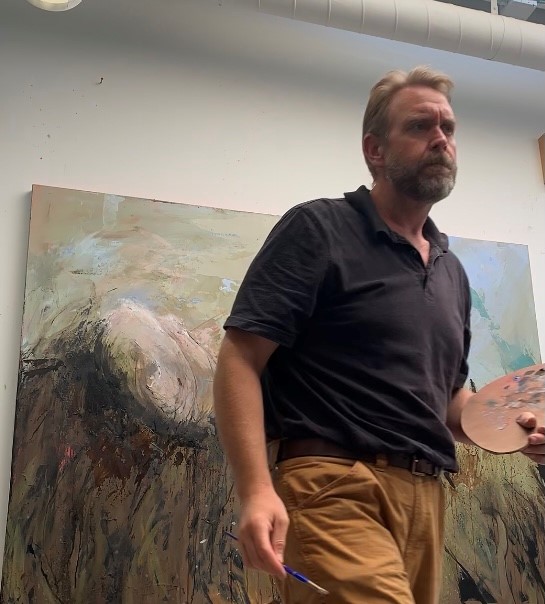
“This is kind of a tough one. So I have a bunch of stuff set up here, but I don’t know quite the best way to kind of take you through it,” Smith said as we began our discussion. “The website might be the best way, but it’s kinda nice to see the scale of things. Also, I think it’s kind of funny and ironic in a way that we’re doing this studio visit via Zoom because in some ways this work is a response to the pandemic and all of the Zoom meetings.”
Smith’s work has a lot of movement and as Zoom creates a somewhat static experience limited by the box of the screen, Smith wants his art to be seen in the best way possible. So to counteract the trap of Zoom, Smith carries his laptop around the studio in a way that makes the visit feel more in person than not.
“They’re so physical in a way, that they start off as a lot of plein air, type paintings, outside,” said Smith. “It’s kind of funny, in a way, but might be interesting in a way too, because, we’re talking on Zoom, which I think is going to be with us now, as a standard way to do a lot of this. The paintings themselves really have nothing to do with digital space. They’re almost a contradiction to the digital space.”
The pieces truly are a contradiction to the digital. His ten-piece “In the Weeds” series gives the viewer an experience and visual of what it might be like to exist as something small in a field of weeds. That something small doesn’t necessarily mean a bug, a small animal or other creature but the human experience in relation to the world and the smallness of our existence.
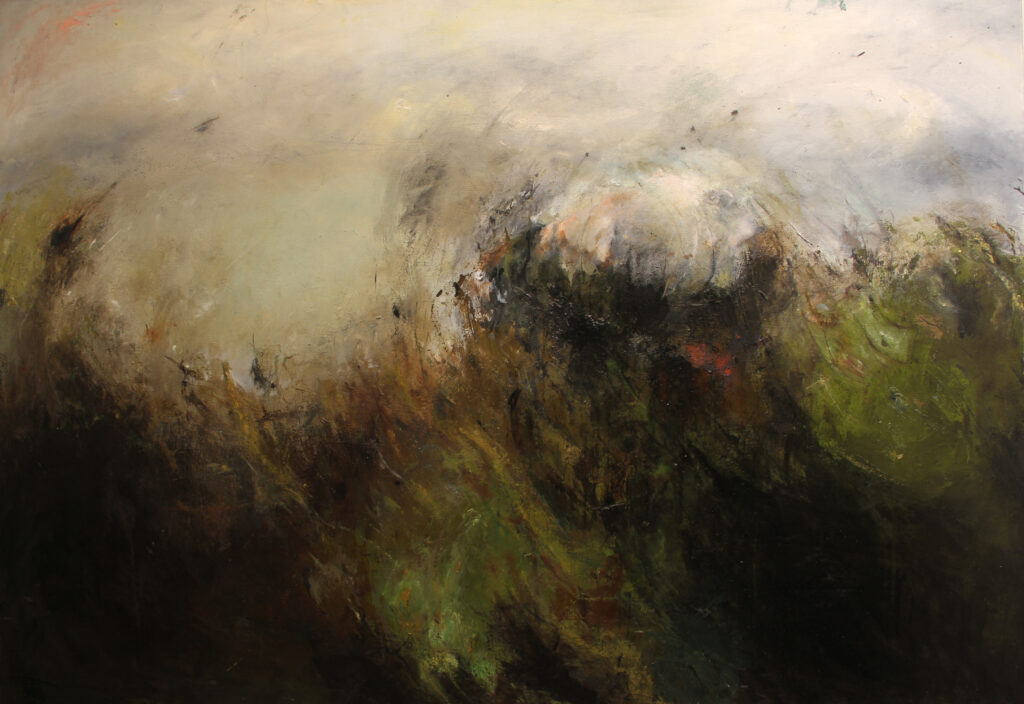
In the pieces, the sky looms large, though as hazy as a distant memory. Each piece in the series has areas of the paintings that feel like portals, something opening up to the viewer. Are the portals escapes or windows to somewhere else?
If we take a look back to Smith’s previous series, “Convulsive Motion,” the beginnings of these ideas are visible. It’s as though we’ve been given the chance, in “In the Weeds,” to look through the eyes of the figures from “Convulsive Motion.” The chaos is a bit less and, though the absence of definite figures is prominent, the disconnection feels greater in the more recent series.
“The paintings started out as sort of these large, plein air explorations in the landscape. About seven years ago, I moved out to a ten-acre farm and I have livestock and cut hay and do all of this farm kind of stuff,” said Smith. “These paintings really sort of directly engage with a lot of that language, or a lot of that experience. And, I’ve been thinking about them modularly for a couple of reasons. I mean, one so that I can get a much bigger scale, but actually less important in that regard, is that I’ve become mildly obsessed with Monet’s haystacks of all things.”
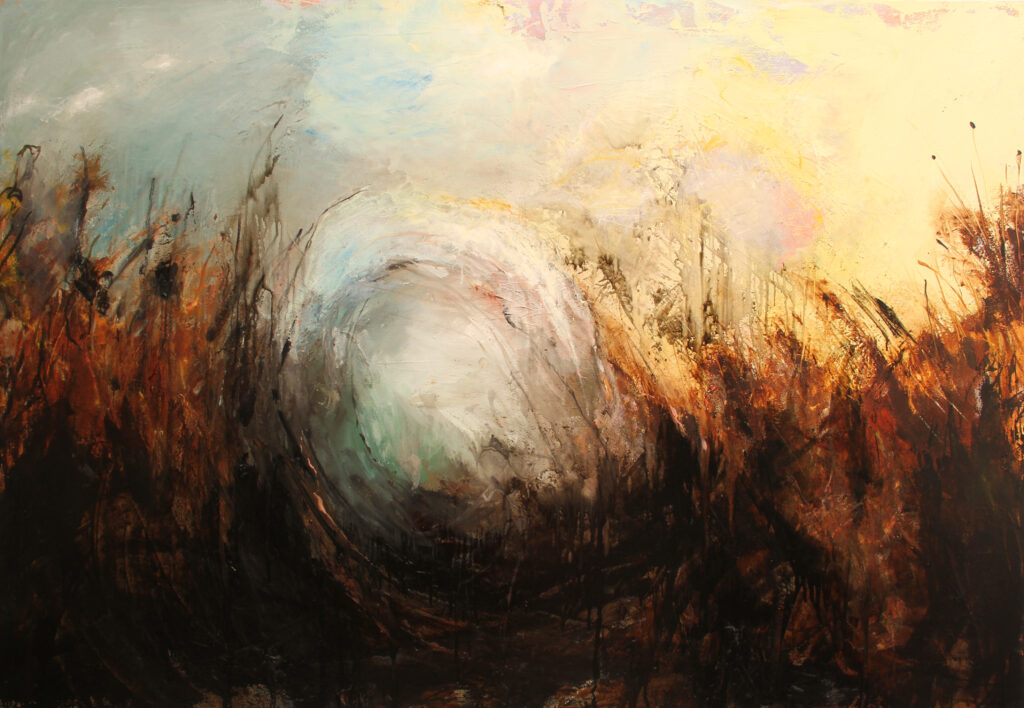
The haystacks that Smith mentions were a series of some 30 paintings Monet did while looking upon a field near his home. The series was an exploration of light and seasonal change. Like Monet’s Haystacks, the paintings in Smith’s “In the Weeds” do some similar exploration. The color, the light, and the mood shifts. They exhibit a similar loneliness but much more frenetic mood than the Monet pieces.
“How do you take a single subject and then capture that subject in a variety of seasons, weather, times of day, light, those kinds of things,” Smith says. “And, so, part of the modular nature of some of these works is so they sit together, but they’re not painted together, if that makes sense. Each panel starts to communicate something slightly different than the panel that’s next to it.”
“I’m not sure what that will end up being, not necessarily that any of that matters, but if you look at this all together, it’s sort of capturing some sense of something happening in the natural sense of like seasons or a passage of time. Some of those sorts of bigger ideas.”
Smith began his higher education at Eastern Kentucky University where he got his BA with honors. He then finished his education with an MFA in Fine Arts and Painting at the University of Cincinnati. He currently is a member of the visual arts faculty at the University of Kentucky School of Art and Visual Studies.
While his current landscapes are dealing with the natural world as it is being forced upon us (and to some degree, we are experiencing the lack of control, a sense of helplessness and doom), his figurative works speak to the horrors of humanity. His inspiration for those came from a more political source: Trump rallies.
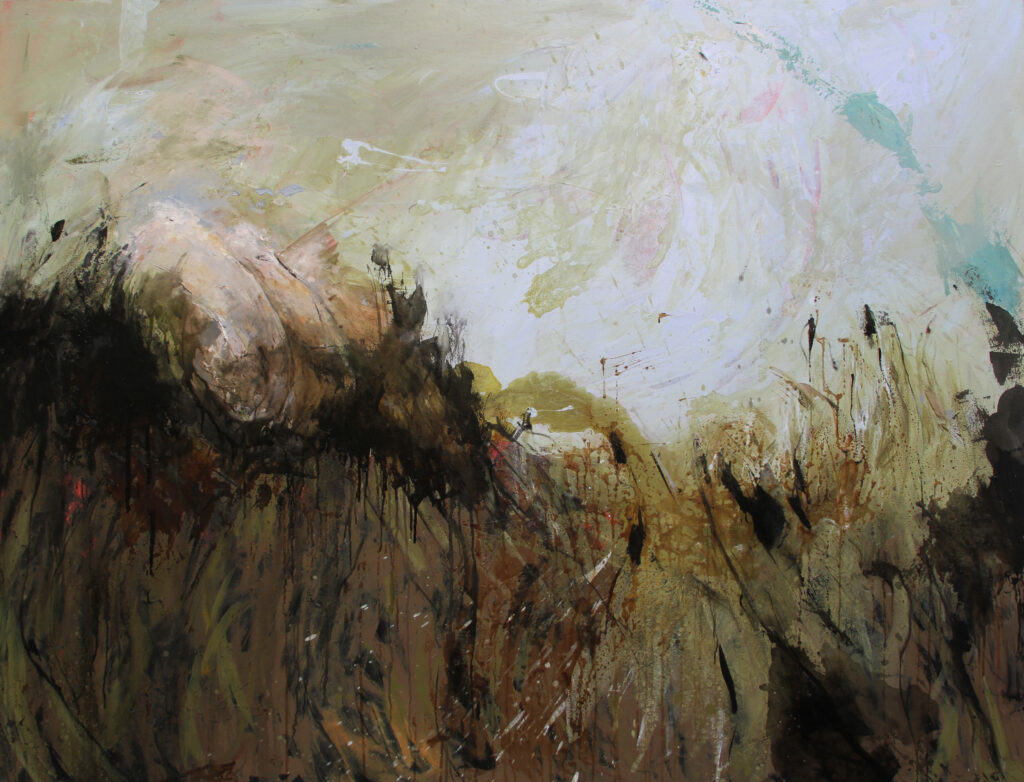
“Those paintings were largely about sort of a combination of things like Trump rallies,” Smith recounted. “My feeling of how those Trump rallies looked like – I don’t know – scenes from ‘The Walking Dead’ or something like that. There’s just sort of these…highly charged emotional scenes that I found really visually problematic in a sense, and that combined with these large ungainly figures that had something to do with my mother and her having a stroke and her inability to use part of her body.”
“Those paintings were trying to deal to some extent with that idea of when your… body has failed you, but also the paintings themselves, I hope, have a little bit of a visual beauty. And so it’s kind of like walking that line, which I feel like I have always walked in my work, which is the space between beautiful and grotesque. And I think these paintings do that too. I’m interested in that same concept moving forward, moving that into these landscape paintings that they be, simultaneously beautiful, and sort of invoking a romanticism, like a Turner painting for example, but they also have sort of an intense dread associated with.”
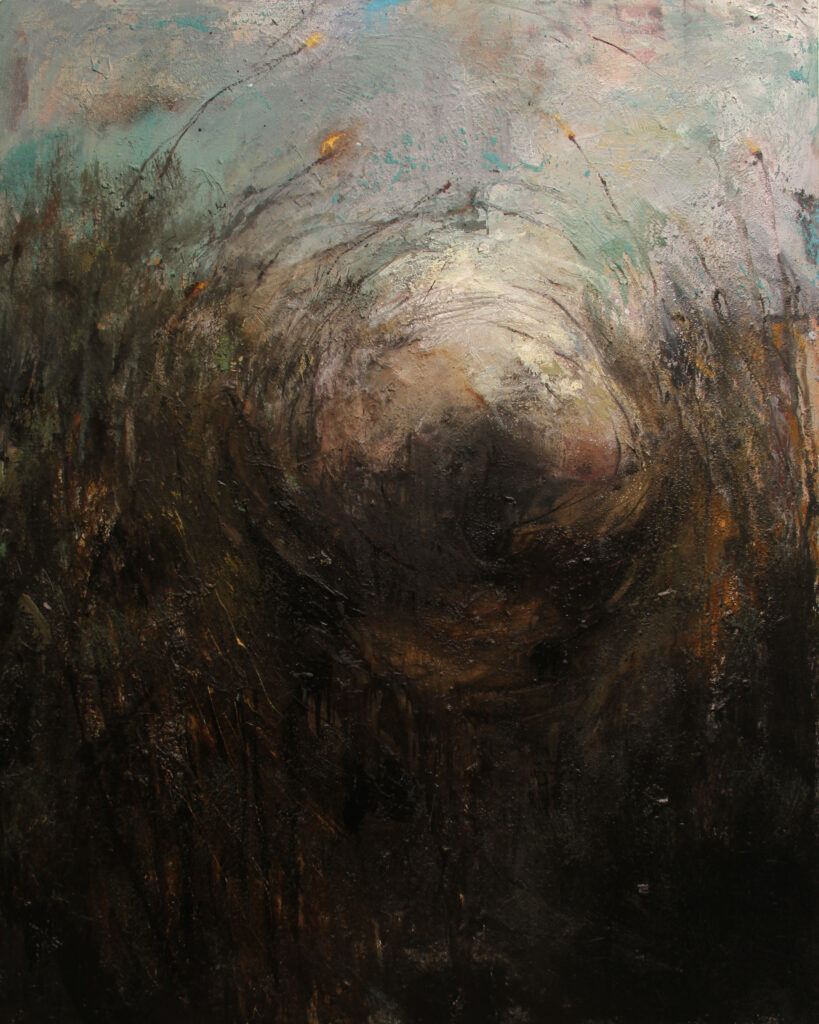
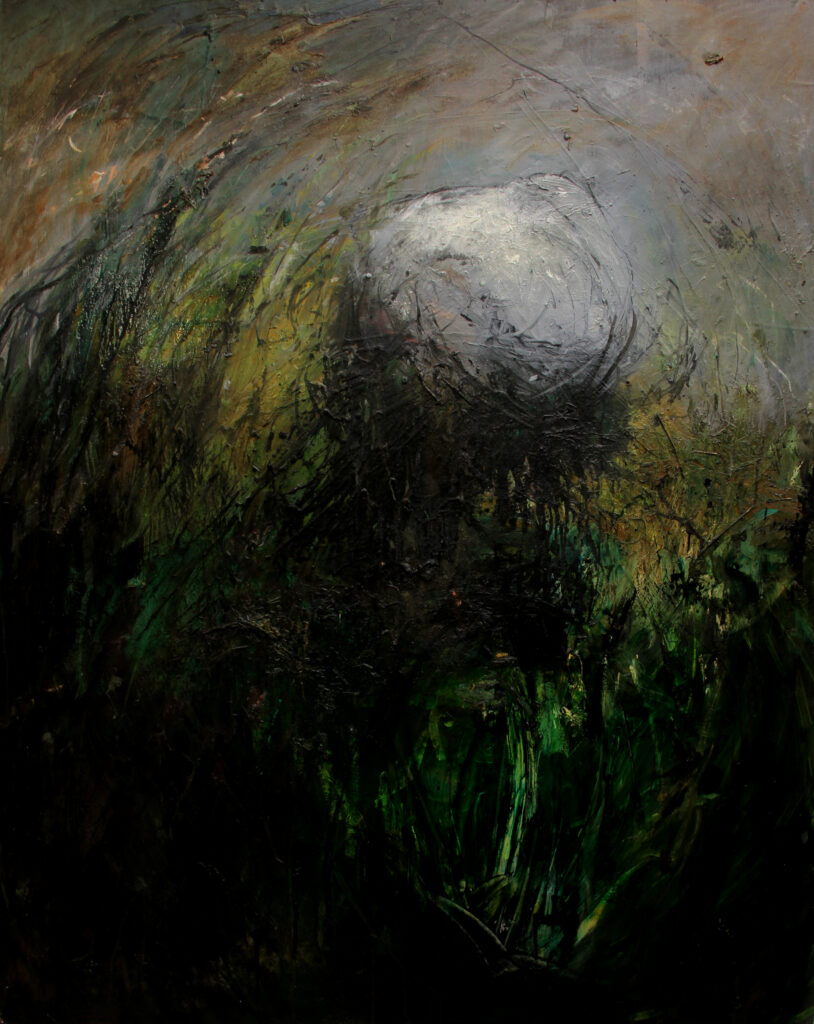
The landscapes continued to grow as we fell deeper into the pandemic which in Smith’s mind, spoke greatly to the “cultural dread” he feels that we are experiencing both naturally and with politics.
“You know, they grew somewhat out of the beginning of the pandemic and that idea of sort of like isolation, but also kind of this idea of – there’s this deep cultural dread that I feel like we are in right now,” Smith says. “And I feel like the paintings are engaging with that, but not in a literal way. I mean, it seems like no matter what you talk about with people, there’s this great sense of dread, whether it’s the environment…there’s a great sense of dread.”
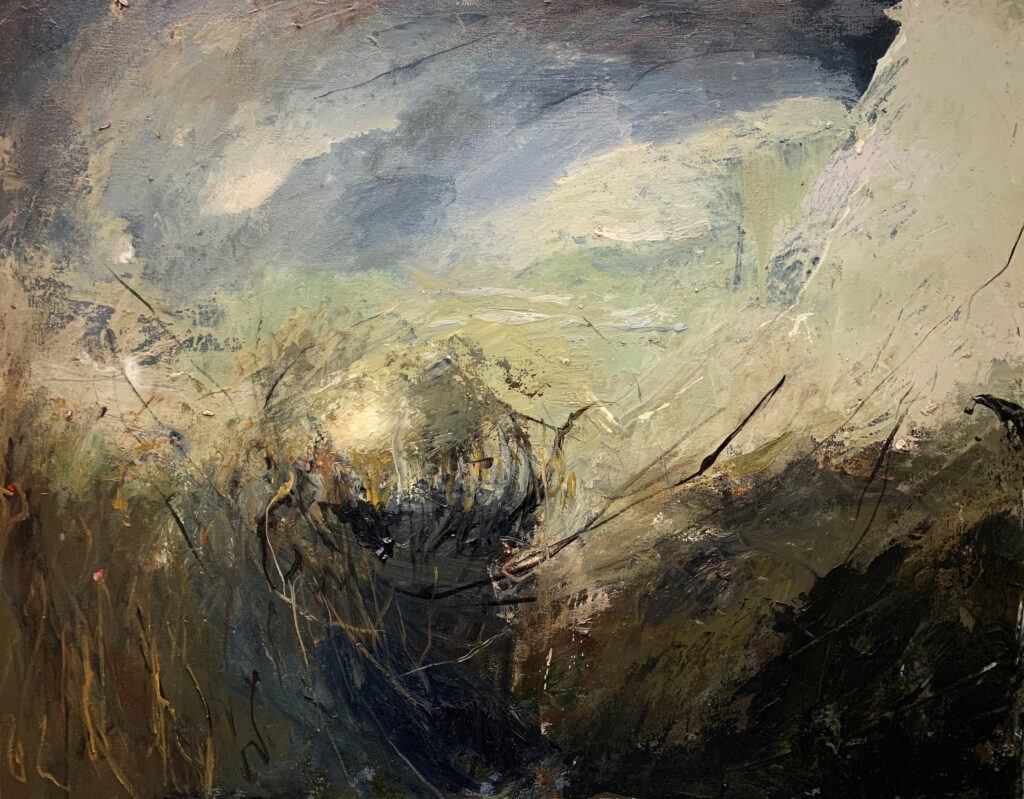
“Now, our health is under siege with this great sense of dread,” Smith continues. “And I feel like that even our movies and our TV shows have this thread of hopelessness with it. So, I feel like that’s being picked up in the paintings. I also want them to have that sense of wonder and awe that you find in nature, and that you find in the environment when you’re out in it, when you sort of place yourself as a small thing in the context of that, if that makes sense.”
All images courtesy of the artist.




